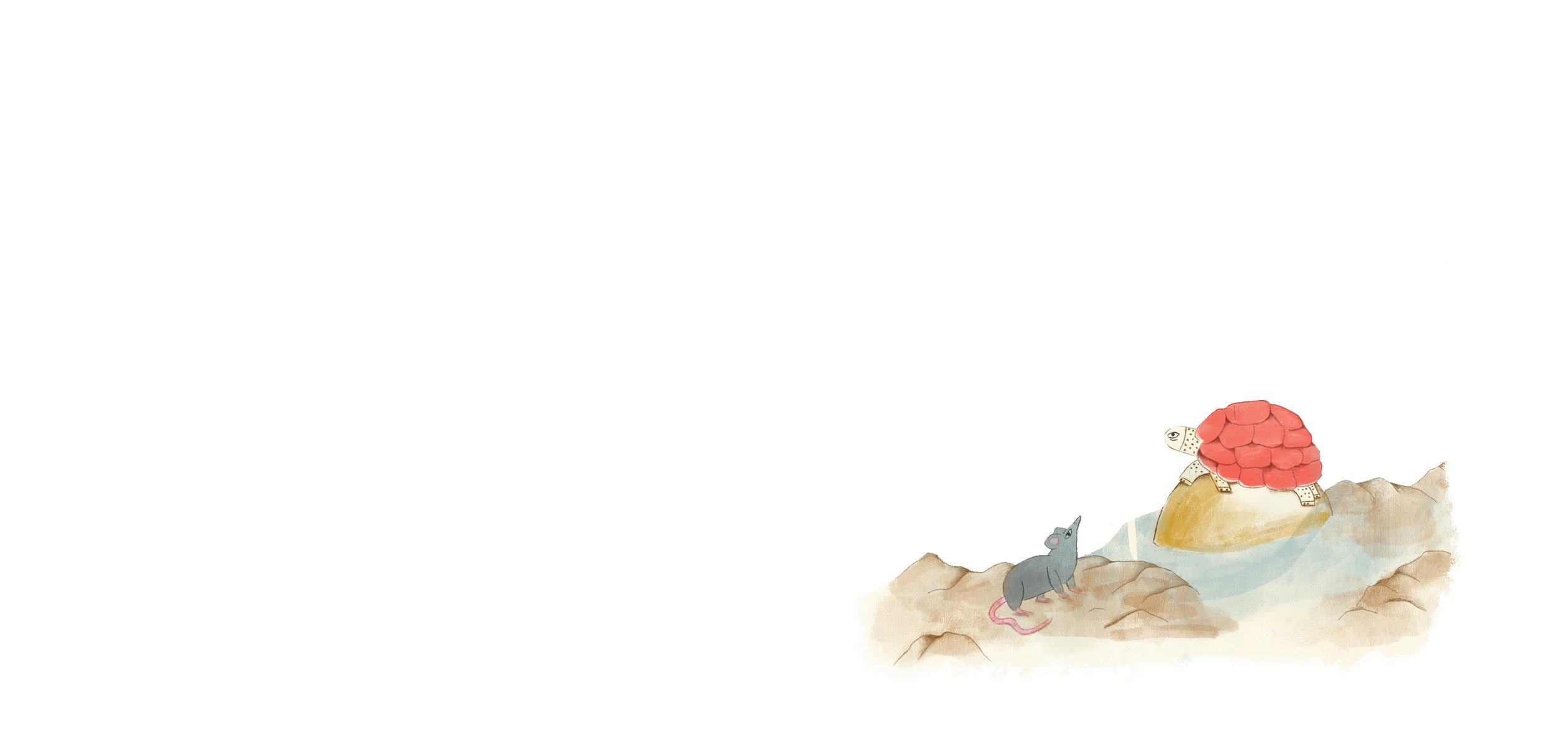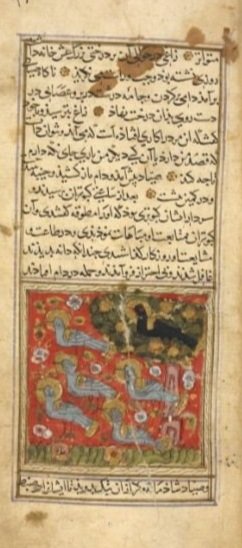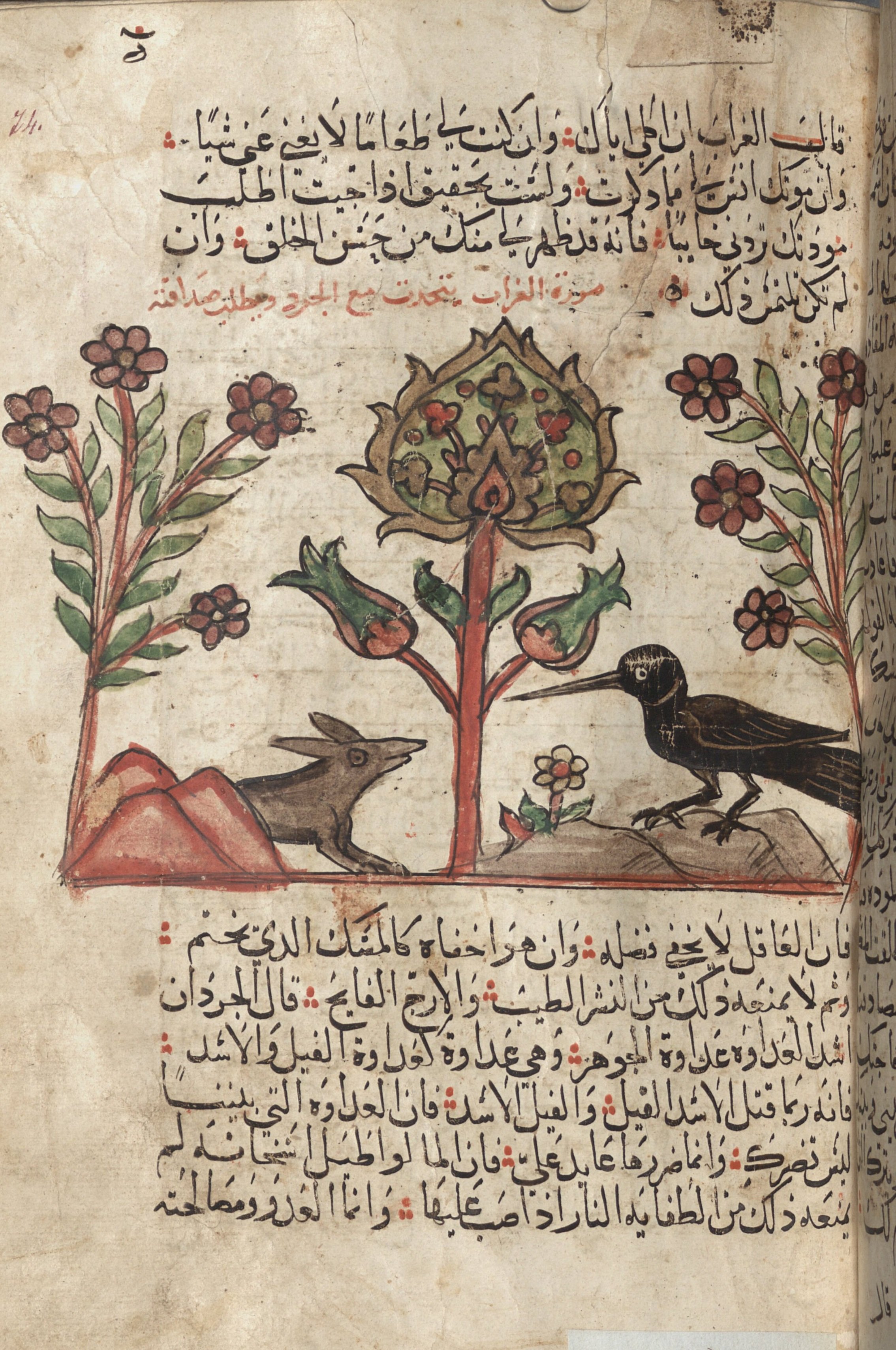
The Tale of the Four Friends
Find out more about the tale from Kalila wa Dimna
that has inspired the exhibition
‘The Four Friends' from Kalila wa Dimna by East London Textile Arts
Kalila wa Dimna online storytelling animation by Artist and ELTA Leader, Celia Ward www.celiaward.net
Based on a version of the tale created by the Children's Museum of Indianapolis (used with permission)

About the ‘Tale of the Four Friends’
The ‘Tale of the Four Friends’ (also known as ‘True Friends’ and ‘The Ringdove chapter’) is a story about looking beyond perceived differences and working together to overcome hardship and build a sense of community.
Like all chapters in Kalila wa Dimna it begins with a brief dialogue between the king and his counsellor. The king states that he wishes to hear an example of true friendship. His counsellor responds with a tale about a crow, a mouse, a tortoise and a deer, and a group of ringdoves.
On the surface at least, the four principal characters – the crow, mouse, tortoise, and deer – appear too different to get along, yet over time they recognise each other’s worth and come to a mutual understanding. The four animals are faced with a series of threats, represented in the story by the figure of a hunter, which they overcome by working together, exemplifying the moral of the fable that true friendships are strengthened by adversity.
Along the way, the animals debate the different types of friendship, loyalty and the value of reciprocity in companionship, as well as philosophical questions of material wealth and poverty, misfortune, ambition, destiny, and the acquisition of wisdom.
The events of the chapter take place in a landscape of persecution and fear, in which the animals move from place to place to find safety. Encounters with others are, at first at least, frequently the cause of anxiety and mistrust – emotions which are overcome through exchange of words. Storytelling lies at the heart of the animals’ ability to see beyond their differences. As they recount their own personal histories and the journeys that have brought them together, they find common ground and create a community in which they are finally able to find peace.
The journeys undertaken by the four friends are not only physical – from one place to another – but symbolic: from pessimism to acceptance of help; from ignorance to wisdom; from exile to companionship; and from fear and persecution to safety and tranquillity.
Folio from the ‘Tale of the Four Friends’ chapter, Kalila wa-Dimna, 1354, Arabic, The Bodleian Libraries, University of Oxford, MS Pococke 400, folio 82b

Folio from the ‘Tale of the Four Friends’ chapter, Kalila wa-Dimna, 14th century CE, Arabic, The Parker Library, Corpus Christi College, Cambridge, MS 578, folio 78r

Folio from the ‘Tale of the Four Friends’ chapter, Kalila wa-Dimna, early 14th century CE, Persian, © British Library Board, MS Or 13506, folio 89r

Folio from the ‘Tale of the Four Friends’ chapter, Kalila wa-Dimna, 16th/17th century CE, Arabic, Bayerische Staatsbibliothek, Cod. arab. 615, folio 151

At its heart, ‘The Tale of the Four Friends’ is about how stories bring people together, creating lines of communication that transcend apparent differences. A tale about looking beyond perceived differences and working together to overcome adversity, it provides the perfect vehicle to explore issues of identity, community, migration, and intercultural relations – themes that are highly relevant in contemporary UK society and above all in a multicultural and multilingual city like London. The story encourages us to reflect on who we are as a society and how we live alongside those who appear to be different.

Fancy reading the story for yourself? Download a copy of the ‘Tale of the Four Friends’ (in English and Arabic) here.
From Kalila and Dimnah: Fables of Virtue and Vice, by Ibn al-Muqaffaʿ. Edited by Michael Fishbein. Translated by Michael Fishbein and James E. Montgomery. Published by the Library of Arabic Literature (New York: New York University Press, 2022). Provided with permission.


